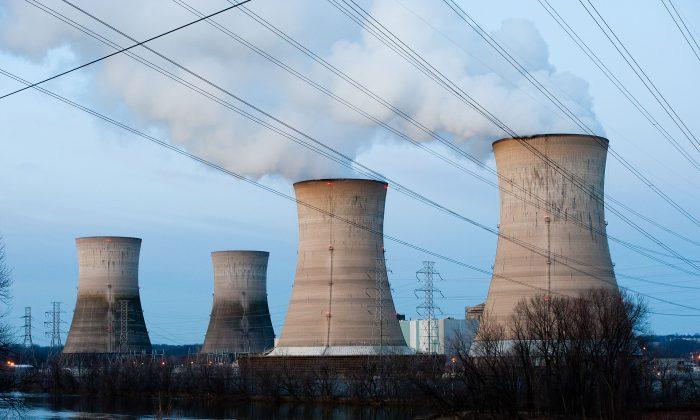Nuclear power plants across the United States rely on Lithium-7 to cool reactors and generate electricity. Yet, the only sources of this ingredient are China and Russia, who produce it as a by-product from their nuclear weapon programs.
The limited supply of Lithium-7 puts a cap on the number of possible nuclear reactors in the United States, and, according to a recent report from the Government Accountability Office (GAO), supplies from China and Russia may be running out.
Lithium-7 is a by-product of lithium-6, which is used in nuclear weapons programs. The United States used to produce its own supply at the Y-12 National Security Complex (Y-12) in Oak Ridge, Tennessee, yet stopped production in 1963 due to health risks. Although other methods are being tested, production of lithium-7 requires large quantities of mercury.
Close to 13 percent of the U.S. energy supply comes from nuclear plants that rely on lithium-7, which “cools the reactor core to prevent the cooling water from becoming acidic,” states a summary of the report. It notes that without lithium-7, water in the reactors would become more acidic, eating through pipes and other infrastructure, “possibly causing them to fail.”
The report raises concern that Russia and China are the only sources. It states a key problem is that “Little is known about lithium-7 production in China and Russia and whether their supplies can meet future domestic demand.“
It is not known how much lithium-7 each country produces, and it is unknown whether the supply will continue.
All 65 pressurized water reactors in the U.S. collectively use 300 kilograms of lithium-7 annually. Yet, China is developing a new reactor for its own use that will need thousands of kilograms of lithium-7 to operate each year.
China and Russia produce enough lithium-7 to meet American demand, but the report cites an expert “familiar with China’s plans” saying China may cut U.S. supplies to feed its own nuclear reactors.
It would take the United States close to five years, and at least $10 million to build a plant that could start producing its own lithium-7.
Yet, the supply may already be running out. In June, three lithium-7 brokers told the United States they were having trouble obtaining it from their Russian suppliers. A Chinese supplier also told the brokers there were no supplies to sell.
The GAO report was requested by Rep. Dan Maffei (D-NY), ranking member of the Subcommittee on Oversight of the Committee on Science, Space & Technology.
A post on Maffei’s website states, “Whether this was a temporary disruption or a pattern of future supply shortages is still unclear, but the potential of future Lithium-7 supply problems is apparent. These events should be warning signs for the Department of Energy’s Isotope Program.”






Friends Read Free